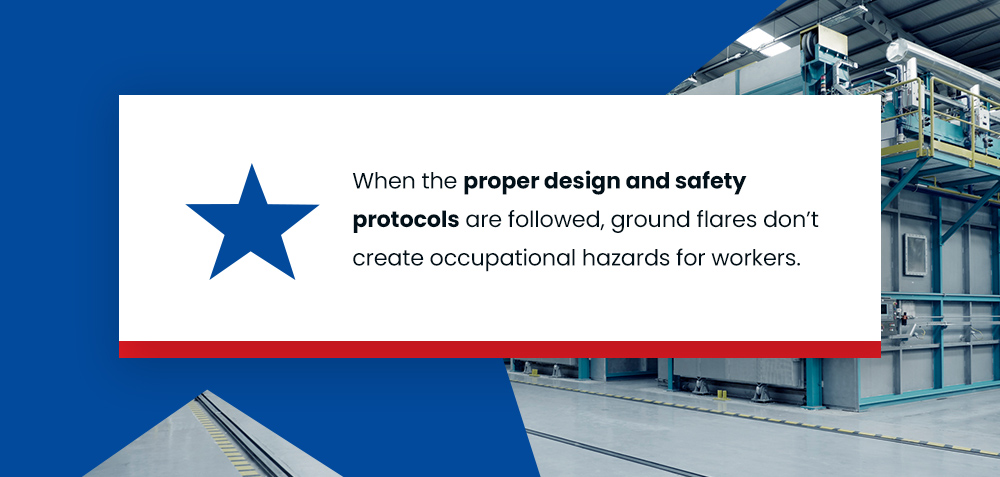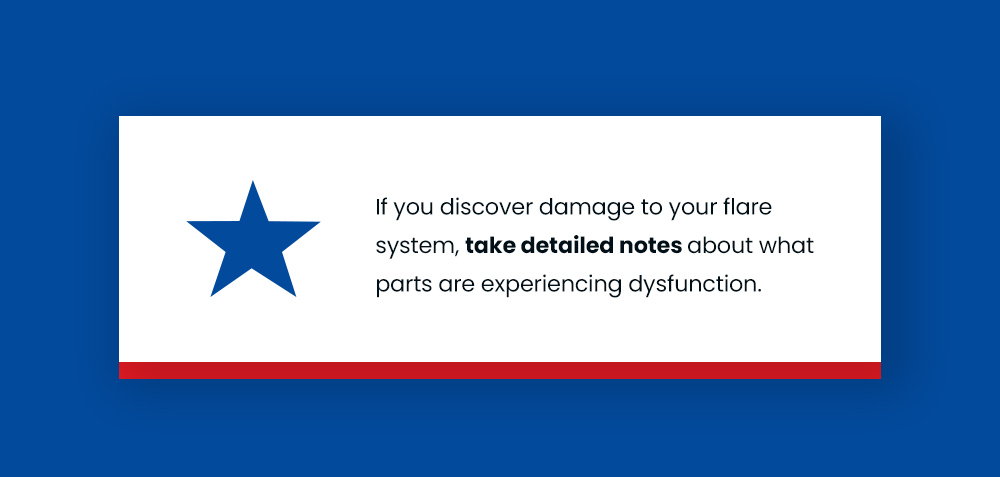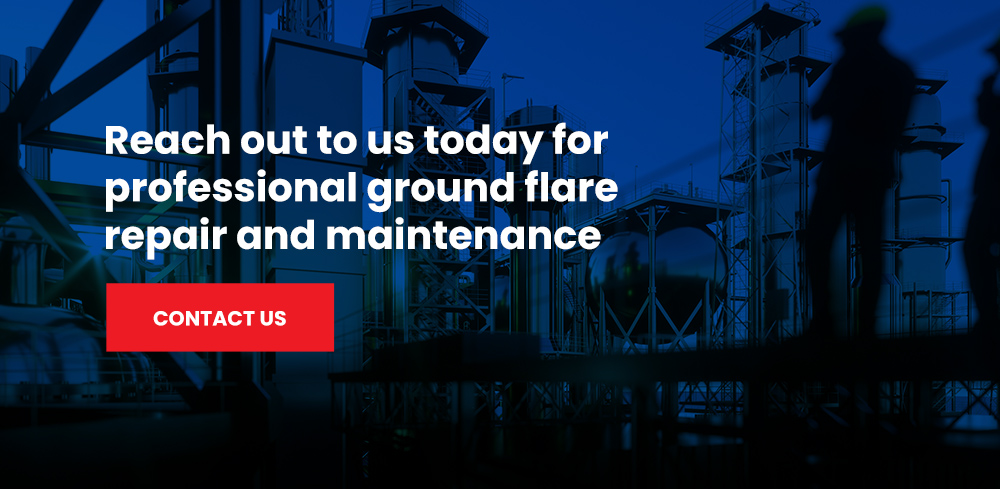A Guide for Ground Flare Repair
Ground flare systems offer unique benefits and challenges to industrial facilities. As one of the most important parts of an industrial plant, flare systems enhance safety for workers and the environment. Like every other well-used system, they need regular maintenance and occasional repair.
Repairing a ground flare system can be expensive since it requires all plant operations to stop. Keep reading to learn more about the different components of a ground flare system, which parts may require maintenance and how you can best handle the repair process.
Flare Design and Types
Several types of flare systems are used across industries. They can be divided first based on height. Many flares are elevated so their ignition source remains far away from other parts of the industrial compound. Ground flares are built in their own area with a radiant heat fence for similar protective reasons.
Industrial plants sometimes use assistance in the form of steam, air or pressure to improve mixing at the flare tips in their compound. Steam- and air-assisted flares are often elevated for safety reasons, but non-assisted, pressure-assisted and multipoint pressure-assisted flares can be built at elevation or ground level.
There are several structural models for ground flares. Some ground-level flares are enclosed, while others have an open-flame design. Enclosed ground flares are built inside an insulated shell. This protects the flares from wind disturbance and reduces both heat radiation and visible light during the flare process.
Open-flame ground flares are built with a radiant heat fence and tend to cover more ground than enclosed ground flares. The open-flame design has a higher capacity for venting gases, while the enclosed design is often chosen for plants that need a lower, constant flow for vent stream.
When Is a Ground Flare System Best?
The best flare design for your facility depends on several factors, including:
- Type of flare gas.
- Amount of available space.
- Cost-efficiency.
- Safety factors.
- Community concern.
Many communities don’t understand that flares are a sign of environmental protection — these flames are created because your plant has burned off toxic gases and is releasing healthier ones into the atmosphere instead. Covering flares with a ground design can increase community peace of mind.

When the proper design and safety protocols are followed, ground flares don’t create occupational hazards for workers. Radiant heat shields protect employees during maintenance, and plant layout design keeps ignition sources away from the rest of the operation.
Understanding the Components of a Ground Flare
Ground flares have several components, depending on whether they’re enclosed or open-flame. The largest difference between ground flares and elevated flare systems is that ground systems don’t have a stack or other mechanisms to support the elevation of gases.
Here’s a quick list of common ground flare components:
- Relief valves
- Knock out drum
- Liquid seal
- Piping
- Gas pilot
- Pilot reignition system
- Smoke suppression assist system
- Refractory wall or radiant heat shield
To optimize your plant, ground flare systems may have small variations in design. It’s wise to work with a professional who can design the safest and most efficient ground flare system to meet your needs. Make sure you understand every element of the design and how they work together.
Step-by-Step Guide for Ground Flare Repair
Over time, these components will require maintenance to ensure they continue operating at top performance levels. Because flares are part of your compound’s safety system, they’re incredibly important.
Each component should be checked and serviced on a regular schedule to prevent issues with the flare system and your plant at large. However, even with regular checks, sometimes repair is necessary. Parts wear out over time, and it’s better to discover this during maintenance than to experience an interruption in regular workflow.
Assessing the Damage and Preparing for Repair

If you discover damage to your flare system, take detailed notes about what parts are experiencing dysfunction. Each piece of the system is essential for safe and reliable operation. Here are a few examples of issues you might encounter:
There could be external damage to components, either from weather or years of use. Check the following:
- Refractory lining
- Radiant heat shield
- Piping and pilots
- Assist systems
There could also be internal problems with the system, reducing function and safety. To find out, ensure that:
- There’s no air in the system.
- All filters and valves work.
- Pipe slopes allow for gas flow.
- Each component works well.
You can check for external damage by visually checking each component of your ground flare system. Of course, workers should never be inside the system while it’s functioning. Visual checks should be fast, easy and uncomplicated — to anyone who’s familiar with the industry, external damage should be obvious.
To check for internal issues, you’ll need to schedule an inspection. Workers may also notice changes in system behavior or reduced performance levels, which can give clues as to what is happening. If you’re concerned about performance changes, it’s a good idea to have a professional inspect your system.
Once you’ve noted all damage, the next step is to schedule repairs for your ground flare system. When every component is working at its best, the system will continue to perform safely and support top production at your industrial compound.
Maintenance Tips to Prevent Future Repairs
To reduce the potential for damage and repair costs, conduct regular maintenance for your ground flare system. Both enclosed and open-flame systems have specific strengths and weaknesses, and eventually, parts will wear out.
However, like other machines, ground flares last longer and perform better with regular checks. The legal requirements for flare inspection depend on the flare design, your facility’s purge rate, the age of your plant and more. You should take advantage of every opportunity to have your flares inspected.
Why Choose McNeil for Ground Flare Repairs?
McNeil has served customers with heat-management services since 1937. When you partner with us, you partner with a team of highly experienced professionals. We offer construction and installation services across a number of industries, including:
- Chemical and mineral plants.
- Refineries.
- Power generation companies.
- Steel and aluminum plants.
- Waste-to-energy companies.
We specialize in refractory lining design and installation for gas ground flares, vapor combustion systems (VCUs) and vapor recovery units (VIRUs). We can create and install a customized lining for your flare system. Using assistive technology, McNeil can run a heat flow simulation so your new lining exactly meets your needs.
McNeil uses all high-temperature rated anchoring systems and can provide scaffolding inside units. We’re committed to high-quality work, safety and professional communication throughout the process. Reach out to us today for professional ground flare repair and maintenance!




